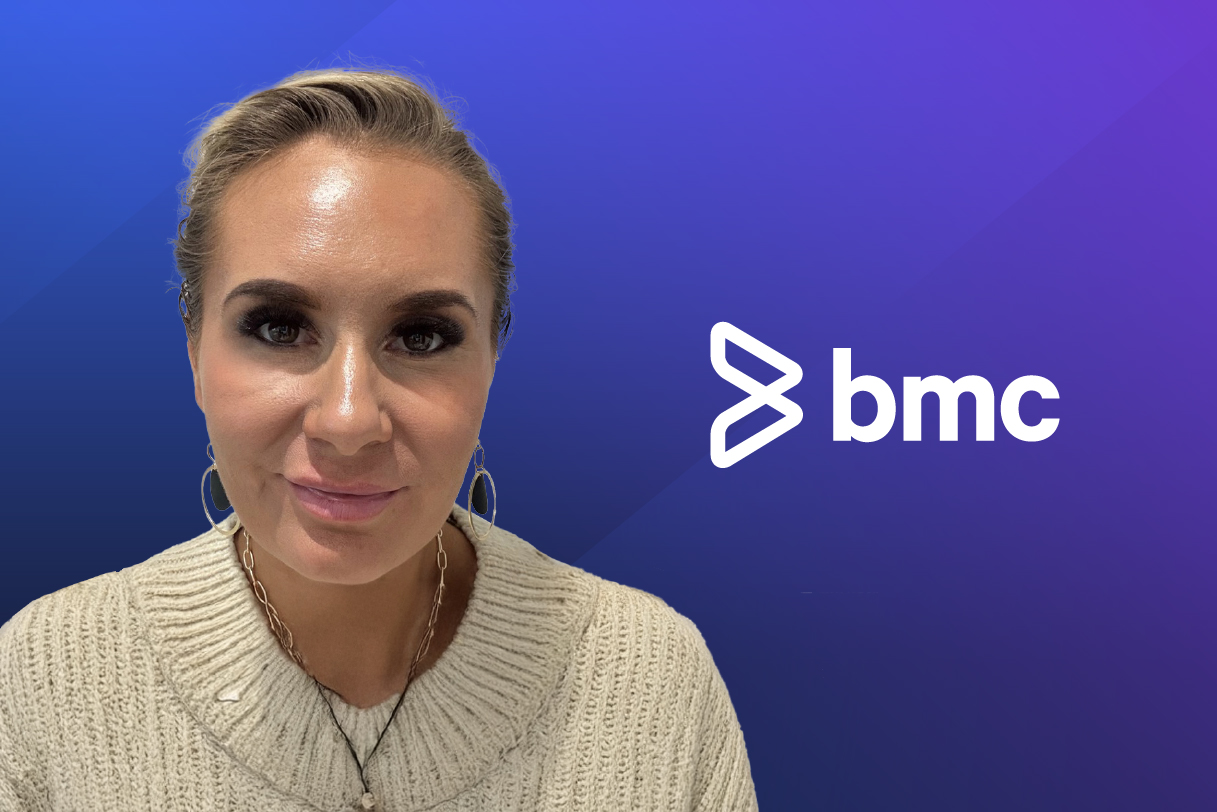Exporting around $55 million worth of products on an average day, Fonterra produces 30 percent of the world’s dairy exports, making the multinational the world’s largest exporter of dairy products and a global leader in dairy science and innovation.And while these figures are impressive, so too is its business model: Fonterra is a multi-generational dairy cooperative owned by approximately 9,000 New Zealand farmers.
Founded by the people for the people, Fonterra requires a robust and well-thought-out talent acquisition strategy to adapt to recruitment challenges in rural New Zealand and ensure the continuity of a dairy cooperative with over 150 years of history.
At our recent AvatureUpfront APAC conference, Keith Muirhead, General Manager of Talent Acquisition at Fonterra, met with the Founder and CEO of Avature, Dimitri Boylan, to discuss the challenges and successes of centralizing recruitment functions within a multinational cooperative.
Muirhead also shared his insights about transitioning from an outsourced recruitment model to in-house recruitment. This brought talent acquisition closer to the business and empowered Fonterra to play a pivotal role in strategic workforce and succession planning, an emerging trend within modern talent acquisition strategies. Read on to find out more.
Tackling Recruitment Challenges in Regional Manufacturing
In his conversation with Boylan, Muirhead shared some of the challenges facing the dairy industry and highlighted the difficulty of sourcing talent with the right skills. Talent shortages affect various areas of the business, including one of the most fundamental jobs: milk collection. If Fonterra can’t collect milk, it can’t turn it into milk products. But it’s a real struggle to find drivers with the right class licenses to drive milk tankers.
Exacerbating the organization’s skills shortage is the long-term issue of an aging workforce. Muirhead highlighted that while Fonterra is a global cooperative, it’s also a regional manufacturer that has to collect milk from 28 manufacturing sites across the country, mainly in rural areas. Like many developed economies, New Zealand has an aging population, a trend that’s even more acute outside the big cities.So not only does Fonterra have to find a way to make the dairy industry attractive, it also has to figure out how to attract people to milk-producing, rural regions. It’s against this backdrop that Muirhead joined the Fonterra team to transform its talent acquisition strategy in a bid to tackle these long-term challenges.
Fonterra’s Shift from RPO to In-House Recruitment
While there was nothing substantively broken with their former outsourced approach to recruitment, Fonterra found that this model wasn’t allowing them to connect with candidates.
We’re a consumer business and, quite often, people will touch the product and then their only other connection to the brand is through recruiters.”
Keith Muirhead
General Manager of Talent Acquisition at Fonterra
Muirhead and his team felt that from a strategic ownership point of view, they would be better placed to achieve Fonterra’s long-term objectives by bringing TA in-house.
Ownership of the front door, ownership of the brand, ownership of the data and the technology and all those things need to make sense.”
Keith Muirhead
General Manager of Talent Acquisition at Fonterra
So, with strategic objectives and key metrics in mind, such as quality, speed and cost, Fonterra’s TA strategy was prepared for transformation.
Spearheading Technological Change with Avature
To drive such fundamental changes to the business, it was clear that Fonterra would need to leverage the right technology for the job. Having previously acted as a key decision-maker in bringing Avature’s software to one of New Zealand’s largest listed companies, Fletcher Building, Muirhead knew that Avature would be an invaluable resource to bring TA in-house at Fonterra.
Of course, it’s not always easy to introduce new technology into an organization, whether that’s due to the challenges of integrating with an enterprise’s existing systems or gaining acceptance from the rest of the team. Having a dedicated internal resource to help implement and interpret between the TA and the IT team greatly facilitated Avature’s uptake at Fonterra.
I brought a great person with me who I’d worked with before who knew the product inside out and really acted as that interpreter between the TA team and the IT team.”
Keith Muirhead
General Manager of Talent Acquisition at Fonterra
Acting on feedback has also been key to gaining widespread adoption of the new technology.
We’re constantly collecting data on experiences and hiring managers in particular. They are pretty vocal when things aren’t running smoothly and they need to get on with their day job. So how do you simplify? How do you automate those processes as far as you can without losing the kind of human touch? That’s where the tech can come in.”
Keith Muirhead
General Manager of Talent Acquisition at Fonterra
And, of course, it’s not just staff who feel the impact of the new technology. Candidates’ expectations are growing and they’re really used to a consumer-grade product in all the things that they touch. Muirhead underlined that when it comes to the candidate experience,
You’ve got them for 20 seconds through an application process, and if that isn’t consumer grade, then they’ll go and work for your competitors who just made it easier to apply. So getting the right product is super important.”
Keith Muirhead
General Manager of Talent Acquisition at Fonterra
The Transformational Results of Bringing TA In-house
Closer Strategic Alignment With the Business
Reflecting on Fonterra’s former RPO model, Muirhead recognized that a separation had evolved over time due to the role of recruiters as service providers. Fonterra’s move to bring TA in-house has flipped this on its head.
One of the great changes that happened almost instantly is this much closer integration of TA with the business.”
Keith Muirhead
General Manager of Talent Acquisition at Fonterra
Muirhead also noted that the acceptance of in-house TA functions and their maturity have come a long way. Twenty years ago, managers were used to their agency relationships and all the benefits that come with them, so proving the capability of TA teams and the impact that they could have wider than the transaction has been a major change.
In contrast to the days when Fonterra used an RPO model, the recruiting team is now part of the conversations around talent, succession and strategic workforce planning. Since bringing TA in-house, Fonterra has been able to better balance the short- and long-term needs of the business. Of course, there are immediate positions that need to be filled to ensure the smooth running of the plants, but there’s now a bigger emphasis on looking at hiring needs five to ten years from now and planning accordingly.
Enhancing the Internal Candidate Experience
The conversation swiftly turned to internal mobility and Muirhead shared that about 45 percent of Fonterra’s hires are currently internal – a result of the increased focus the organization now has on internal mobility and its dedication to providing a great experience using Avature software.
However, he and Boylan also discussed the common irony that while internal candidates’ applications arguably deserve special attention, they often have an inferior experience to external candidates. With this in mind, Fonterra has unified the candidate experience by implementing a conversational chatbot on its career sites for both internal and external candidates.
Not only should the employee experience be aligned, but there’s another irony at play in that recruiters should know more about internal candidates but often don’t due to poor data.
If you know more about them [the candidate] through external data than internal data, you don’t have enough internal data.”
Dimitri Boylan
Founder and CEO of Avature
However, unlike external candidates, internal hires expect the recruiter to already be familiar with their skills and experience, so training and data collection in this area is key.
I think we’re getting savvier about how we collect data and records that we’ve got and how we treat those people through the process and making sure that experience is still a positive experience.”
Keith Muirhead
General Manager of Talent Acquisition at Fonterra
By collecting better data, Fonterra is getting to know its internal candidates better, which in turn has improved the candidate experience. Muirhead shared that Fonterra has been able to build on this data and improve the candidate experience even further by holding career coaching workshops to facilitate more successful and positive career conversations internally.
A Skills-Based Approach to Talent Management
The conversation naturally expanded to the role of skills in Fonterra’s TM strategy.
While Fonterra has ambitions to move towards a skills-based approach to talent management, Muirhead shared that the move hasn’t been simple. Transitioning to a skills-based approach hasn’t only been a challenge regarding the technology used to collect skills data, but also culturally.
Muirhead highlighted that there’s a common tendency for managers to hoard talent within their own team instead of thinking about how it could be used best for the company at large. With this in mind, coaching managers on the benefits of boosting employee mobility within the organization will be an integral part of Fonterra’s manager’s program moving forward.
Building a High-Performance TA Team
Beyond the many benefits of bringing Fonterra’s recruiting capability in-house, the conversation drew to a close by examining how the role of the recruiter today has changed significantly. Boylan was interested to learn how Muirhead recruits for his TA teams with this in mind.
Muirhead shared that he looks for good human beings first and foremost when it comes to building a successful team. After all, the responsibilities of the role include dealing with people and lives.He also highly values curiosity and looks for people who want to learn, look at what others are doing and continually evolve. Muirhead advised against putting people in boxes and instead advocated fostering a sense of ownership where talent acquisition partners think in the long term and feel responsibility for their business unit.
If you break roles down functionally and the business is dealing with five or six recruiters, you’re not necessarily driving that sense of ownership. Now, if you’ve got ownership, then you need to be solution-oriented. You need to be thinking, ‘how do I bring the resources available to me and utilize that best for my team,’ and I think the role is just a bit more joyous when you’ve got that variety as well.”
Keith Muirhead
General Manager of Talent Acquisition at Fonterra
Muirhead also underlined that an increased sense of ownership over the success of the business, combined with a strategic use of technology, plays a key role in reducing burnout in TA positions. Thanks to technology, Fonterra has been able to automate repetitive administrative tasks, freeing up his TA team’s time to think strategically and focus on work that takes longer to accomplish but achieves strategic objectives.
Another factor that’s been instrumental in transforming Fonterra’s in-house TA team is having a high level of specialization. At Fonterra, the TA team comprises members dedicated to branding and marketing, tech specialists, sourcing specialists and more. Providing the right resources to each team member has been key to harnessing the power of a varied and specialized workforce.
Finally, Muirhead also highlighted the pivotal role that leadership plays in a successful talent acquisition transformation.
I think from a leadership perspective, you need to provide clarity, you need to provide inspiration, and then you need to provide the resources. I’ve been fortunate with the sponsorship I’ve got from my boss, and the resources are available.”
Keith Muirhead
General Manager of Talent Acquisition at Fonterra
Provided with the right resources and necessary clarity, Muirhead worked with the team so that they felt part of Fonterra’s TA journey. The results have been inspirational.
I talk to the team about this concept, which is not of employer of choice but a function of choice. We want to be known as a team that people look at and say, ‘Wow! They’re doing great stuff!’ So if you can get that energy into the team, I think we’re on track.”
Keith Muirhead
General Manager of Talent Acquisition at Fonterra


